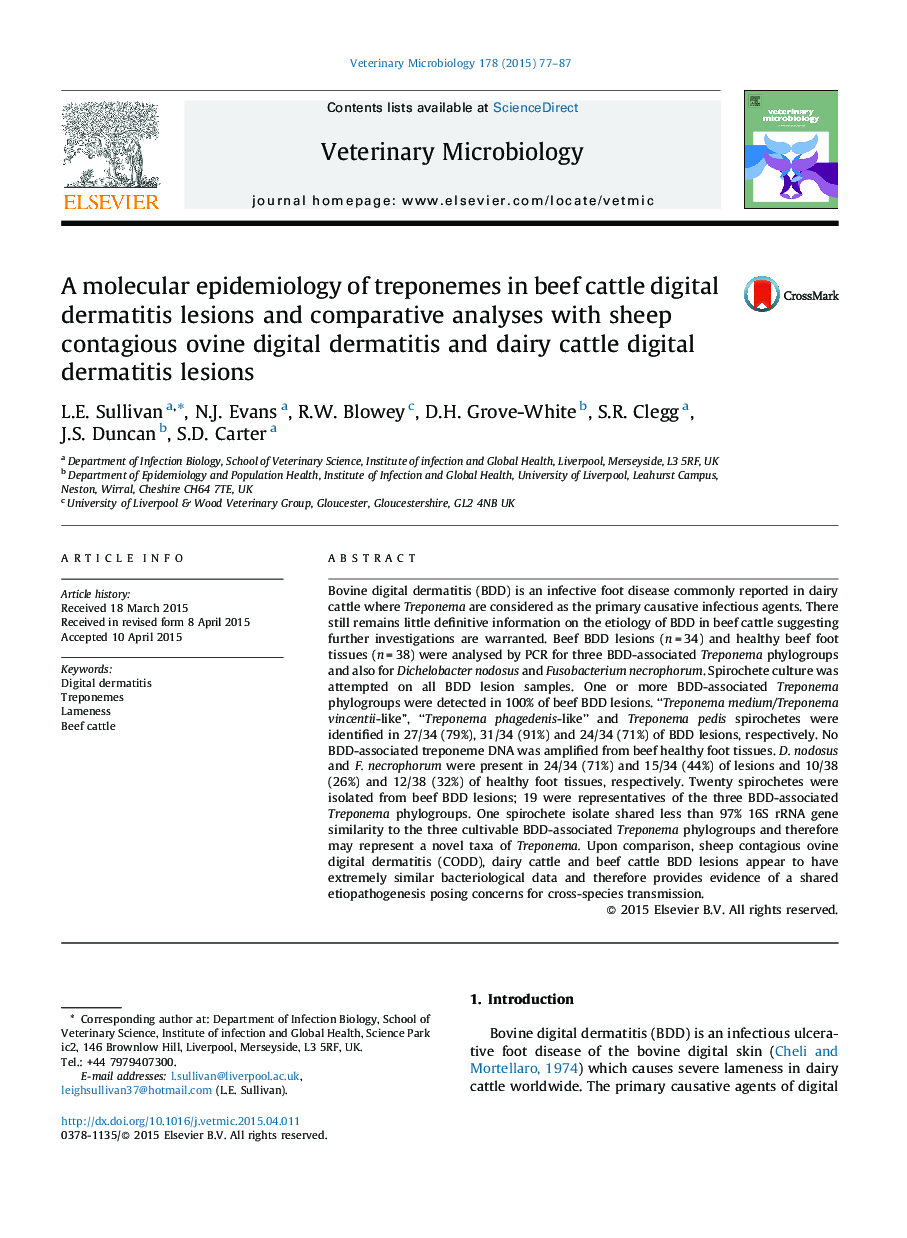| کد مقاله | کد نشریه | سال انتشار | مقاله انگلیسی | نسخه تمام متن |
|---|---|---|---|---|
| 5799885 | 1555349 | 2015 | 11 صفحه PDF | دانلود رایگان |
- Bacteriological survey of beef cattle bovine digital dermatitis (BDD) lesions.
- One or more BDD-associated Treponema phylogroups were detected in 100% of lesions.
- D. nodosus and F. necrophorum were present in 71% and 44% of lesions, respectively.
- A spirochete isolated from a BDD lesion may represent a novel taxa of Treponema.
- Evidence of a shared etiopathogenesis between sheep, dairy and beef cattle lesions.
Bovine digital dermatitis (BDD) is an infective foot disease commonly reported in dairy cattle where Treponema are considered as the primary causative infectious agents. There still remains little definitive information on the etiology of BDD in beef cattle suggesting further investigations are warranted. Beef BDD lesions (n = 34) and healthy beef foot tissues (n = 38) were analysed by PCR for three BDD-associated Treponema phylogroups and also for Dichelobacter nodosus and Fusobacterium necrophorum. Spirochete culture was attempted on all BDD lesion samples. One or more BDD-associated Treponema phylogroups were detected in 100% of beef BDD lesions. “Treponema medium/Treponema vincentii-like”, “Treponema phagedenis-like” and Treponema pedis spirochetes were identified in 27/34 (79%), 31/34 (91%) and 24/34 (71%) of BDD lesions, respectively. No BDD-associated treponeme DNA was amplified from beef healthy foot tissues. D. nodosus and F. necrophorum were present in 24/34 (71%) and 15/34 (44%) of lesions and 10/38 (26%) and 12/38 (32%) of healthy foot tissues, respectively. Twenty spirochetes were isolated from beef BDD lesions; 19 were representatives of the three BDD-associated Treponema phylogroups. One spirochete isolate shared less than 97% 16S rRNA gene similarity to the three cultivable BDD-associated Treponema phylogroups and therefore may represent a novel taxa of Treponema. Upon comparison, sheep contagious ovine digital dermatitis (CODD), dairy cattle and beef cattle BDD lesions appear to have extremely similar bacteriological data and therefore provides evidence of a shared etiopathogenesis posing concerns for cross-species transmission.
Journal: Veterinary Microbiology - Volume 178, Issues 1â2, 9 July 2015, Pages 77-87
